Itinerary
Arrival at Colombo International Airport.
Welcome and transfer to Jetwing Lagoon resort for refreshments. This is one of the great early Geoffrey Bawa designed resorts now salvaged and restored tastefully with all four-star comforts added. The resort is built sandwiched between the vast Negombo lagoon and the Indian Ocean and boasts of one of the largest swimming pools. A fine mangrove belt skirts the resort and engrossed in the prevailing silence; one could sit on the wooden deck facing the lagoon to watch the wavelets lapping the shore as Geoffrey would have done with his favourite gin & tonic at hand. The amazing laid-back ambiance will be a fine beginning to the pearl of the Indian Ocean and its world-renowned architect, Geoffrey Bawa.
*Stayers will be offered the Bawa rooms on availability.



Negombo is a former Portuguese and Dutch colony and is one of the main fishing harbours of the Island. A morning visit to the lagoon- mouth will thrill you to the limit when ancient catamarans and modern motorboats return cheek by jowl to the shore after competing for the nights catch. The ensuring chaos of sorting, buying and selling and the torrent of bargaining will leave a visitor spellbound by the coarse exchanges itself to say nothing of the visible Sri Lankan seaside character. You can also visit the beach of the cape they use for drying fish if only you could bear the stench. But it’s rather educational. In addition to the activities at the lagoon-mouth and the shoreline, Negombo boasts of some of the finest Catholic Churches in the Island. Alluringly, some date back to the 17th and 18th centuries. You will also be driving along the tourist colony where hotels, guest houses, restaurants, pubs and sea-food outlets dress up the roadside with their charming illuminations making the famed colony vibrant and bright.
Dinner at a sea-food restaurant.
Overnight in Negombo




Leave for Dambulla after breakfast on a 3.5-hour drive.
Once you leave the bustle of the city you will be driving into the vastness of farming country where coconut and paddy feature prominently and upon passing the historical city of Kurunegala, the vegetation changes rapidly from lush crops to dry and deciduous forest cover which is the unique landscape tourists are attracted to.
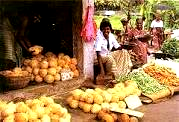
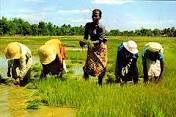

Kandalama Resort
Upon arrival at Dambulla, visit the Heritance Kandalama resort which is found almost hidden among foliage of virgin forests overlooking an enchanting ancient lake surrounded by a ring of mountains. The setting is so breathtaking and may not be found in the same magnitude anywhere else in the World. The forests are home for wild elephants and elusive leopards and at dusk when the sky turns scarlet, you could watch from your balcony or from the hotels’ numerous terraces and decks – thousands of aquatic birds in silhouette – flying in formations to an uninhabited island in the middle of the lake to roost for the night. The isolation of the property and the tranquillity of the stunning landscape to which Geoffrey Bawa’s architectural wonder incredibly merges will leave you spellbound by its captivating delight!
A sumptuous buffet lunch awaits you during which time you will get to study the property with an assigned staff member.
Afterwards proceed to Sigiriya and Dambulla sites, not too far, on a study tour. It is no secret that Geoffrey used the ancient layouts of Sigiriya and art & craft of Dambulla for his creations.



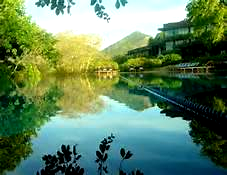
SIGIRIYA
The spectacular rock fortress of Sigiriya belongs to the 5th century. It’s a world heritage site. Different theories of its creation are published by eminent archaeologists. Some say that once a Kingdom of a King was later used by monks as a monastery complex.
Whichever the theory is, the 640-foot gigantic rock striking into the clouds from the arid flat plains by itself presents an inscrutable mystery to most. As you approach the great fortress, firstly you’ll get to brave the deep moat built right around the rock that had been infested with man-eating crocodiles during the King’s time. The pleasure gardens of the King come next in where during the rainy season, water fountains still emit a substantial spray most astonishingly. After you pass the classic rock garden and stroll through stunning boulders that may have held many impressive structures together as guard points in ancient times, you’ll proceed towards the all-important cavity in the rock located halfway up where the world-famous frescoes of the
beautiful maidens are found, painted on the very rock-wall in natural colours so miraculously. This indeed is a masterpiece that is priceless.
At certain times of the year, you can watch nesting peregrine falcons in some of the other cavities on the rock-wall.
Afterwards, proceed to the colossal Lions paw made of bricks, climbing further along the incredible mirror wall on which the yesteryear admirers of the paintings wrote poetic eulogies delineating what they saw in quaint, early Sinhalese characters, perhaps readable only to the archaeologists now.
A further adventurous climb from the Lion’s paw will take you to the flat summit of the rock to enjoy one of the most beautiful views in the Island, that of the ever-green tree canopy of the Island’s dry zone that is seen dotted with ancient man-made lakes. The immediate area surrounding the rock is a declared sanctuary in where wild elephants and other game still roam. On the peak you will also come across the King’s court, remains of his living quarters and his pool complex, presently opening out to the heavens in the absence of any shelter! The mystique fortress which is sadly dead now leaves its wonderful legacy for you to visualize its heyday with ease.
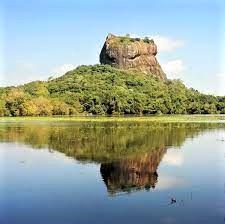
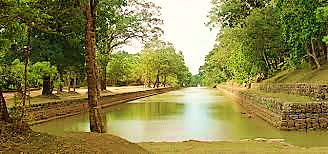
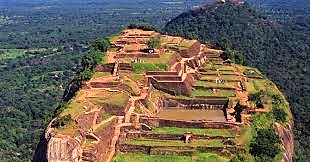
DAMBULLA
Dambulla cave temple is situated not too far from Sigiriya; yet another world heritage site where in five pre-historic caves you’ll find not only fantastic colourful rock-wall drawings, mostly of Buddha and events of his life, but some outstanding sculpture work as well. Some do date back to the distant 1st century. The paintings are perhaps second only to the ones at Ajantha and Ellora in Aurangabad in India. Eminent painters who visit the caves as an essential part of their itinerary are often mesmerized by the creation of such rich colours, so soothing to the eye, so early in civilization, and express their wonderment as to how the treasured paintings had survived all these centuries in their original form!

SPICE GARDEN
Sri Lanka had been famous for its spices since the medieval times and is considered as one of the main reasons for the Europeans to conquer the Island. It was also the reason for the Arabs to become interested in the Island from the 14th century onwards. The most interesting feature would be the opportunity you’ll get to identify the real plants of spices you are so familiar with in your day-to-day life. A qualified guide will conduct a tour of the garden and may add a presentation of the products.

KANDY
During your stay you could explore the quaint city of Kandy, the last Kingdom. Visit the Temple of the sacred Tooth Relic; the most important place of worship for Buddhists world-over. At the Tooth Temple you’ll get to participate in a colourful ceremony to the tune of the Eastern tom toms which will be full of timeless culture and age-old rituals.
You’ll also visit the upper lake area to catch a bird’s view of this fascinating lake city and the great temple cluster that is declared as a world heritage site now. A visit to the botanical gardens the following morning will thrill you for it is the only one of its kind in this part of the world. Being the pleasure gardens of the Queen once and found hugging a meandering river, you could saunter under the fine shadow of great trees for hours passing manicured lawns and lovely flowering shrubs in wooded groves. A visit to the famous orchid house is a must for orchid lovers.
Evening, one could walk around the Kandy Lake and along its paved paths with the great Temple in the
backdrop, enjoying the cool breeze that flows freely from the distant hills. Kandy being the last Kingdom offer valuable souvenirs in handicraft and gems. Sri Lanka is the only country in the world in which world-famous blue sapphires are found in its pure original form.
It is said Geoffrey Bawa spent some quality time studying Kandy Era architecture of temples and old buildings. His creations amply feature court-yard layouts and paving arrangements not to mention garden landscapes of the Kings’ time Kandy.
Overnight in Kandy.
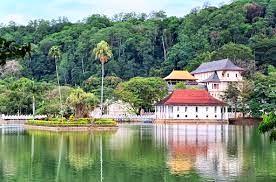
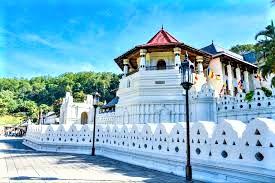

After breakfast free for more temple visits around Kandy, namely Gadaladenya, Lankatilleke and the Embekke shrine for a further study. Study of woodcarvings of the era are included as part of the tour. Afterwards proceed to Galle on a 4.5-hour journey, making use of the motorway halfway. Upon arrival, check into your handpicked hotel on the coast.
You are sure to be mesmerized by the scenic beauty of the inland route as the landscape is bound to change with each mile you pass. Paddy, coconut, palms, rubber, tea and cinnamon cultivations feature as crops in addition to stretches of mangroves skirting the waterways. As you ascend elevations you will be traveling through rock formations intermittently.

The Unbeatable coast of Sri Lanka
Sri Lanka’s southern coast is unique in many ways. During the prime tourist season between December and April, the entire coast transforms into a magical tourist colony making its numerous resort hotels, restaurants, pubs, discos, spas and other outlets catering to the tourists busy. Famous stilt fishermen become active in Weligama and so are the whale watching activities in Mirissa, gearing up for the following dawn. The setting sun on Indian Ocean always presents remarkable panoramas specially when coconut groves and fishing boats get included in frames as silhouettes.


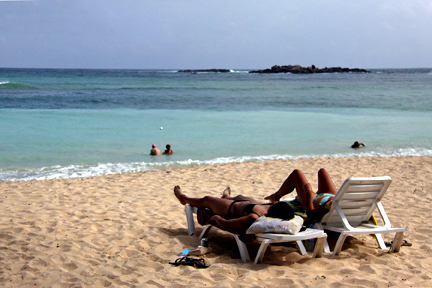
Overnight at your coastal hotel.


After breakfast you will visit the Ruhunu university designed by Mr Bawa in the early eighties. Since the structures have changed so much from his time it would be educational to note how the changes are made to merge into the old by Geoffrey’s disciples who are vested with powers to approve any restoration of Bawa canon.
Lunch will be at the famous Jetwing Light House hotel, another remarkable Geoffrey Bawa creation. A study tour is on the cards.



GALLE
After lunch visit the 17th century Dutch Fort; one of the best-preserved Forts of the colonial era. Geoffrey was a great fan of European architecture of the renaissance period and used what the Dutch designed in the Fort for his work along with the vernacular.
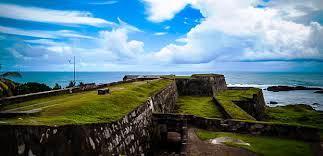


At Galle you’ll find the 17th century Dutch Fort which is a World Heritage Site. In a vast isthmus protected by a massive rock wall built around it, you would come across grand churches, great Dutch buildings, ancient garrisons protected by cannon positions, maze of court yards, paved assembling points: all well connected by cobblestone streets and then an invaluable maritime museum, all restored to its former glory after the devastating Tsunami in 2004. The Dutch Govt generously funded the restoration since the Fort was part of their heritage. The British built a classic light house in 1848 and you could saunter from the light house to the entrance of the Fort along a paved path – on the towering Fort-wall – enjoying the view of the rocky sea beach and its aquamarine waters on one side and the Fort on the other. There is famous Amangalle hotel; an exclusive up market property built during the Dutch times, famous for its cozy yesteryear ambiance. It was formally known as the NOH and you could visit the colonial hotel for a cup of tea or for lunch if you wish to go back to the 18th century glory days.



Overnight at your coastal hotel.
Check out early morning and head towards Ahungalle. Here you will be visiting one of Sri Lanka’s prime Bawa designed properties which is now The Heritance Ahungalle. During Geoffrey’s time in the late seventies it was known as The Triton. In addition to his famous “priority for space theory” Geoffrey uses the infinite effect in getting the azure blue waters of the fabulous pool of the resort to merge with that of the sea at a glance, and is credited with the invention as the first ever in Sri Lanka



You will be doing your study tour of the property over the breakfast.
Afterwards, you will visit Geoffrey Bawa’s Estate “Lunuganga”.


Geoffrey Bawa Estate Lunuganga in Bentota.
This is a masterpiece creation of world-renowned Sri Lankan architect Geoffrey Bawa. Set amidst a vast garden of 20 lush acres overlooking a pristine lake, the structures of an elegant home, tasteful accommodation, great decor and an infinite pool takes one’s breath away in awe instantly. What steals everything else is the wonderful landscaping of Lunuganga gardens, the way Geoffrey has managed to preserve untouched nature of the region and the way he has secured best views of the lake through wilderness from hillocks of the property to soothe the eye as well as his mind. He has used the splendour of renaissance period and the historical landscaping techniques of Italians, merging them exquisitely with recorded Sri Lankan tending patterns of the King’s time. An hours’ tour is conducted by professional guides daily which will be an unforgettable experience to a visiting tourist blessed with refined taste. Lunuganga is just a short distance from the coast.


Then proceed to Cinnamon Bentota Beach Hotel located close by. It was designed by Geoffery in the early 70’s and stands as one of his most outstanding creations.



Built in one of the prime building sites in Sri Lanka found sandwiched between the Indian Ocean and the alluring lagoon, the resort with immaculately maintained large garden opens out to the pristine beach of Bentota. Also, this is the beach that has best water sports facilities on the West coast. The hotel pool is carved out of natural rock and a footpath from it leads one either to the beach or to the wafer-thin stretch of sand separating the sea and the lagoon. Another key factor is the use of giant frangipani trees to surround the buildings as you find in any rock temple of Ceylon where the scented white flowers are made to fall at the foot of the tree or on rustic pavements.
A buffet lunch awaits you at the Bentota Beach Hotel and you will be doing a tour of the hotel over lunch.
After lunch, a stroll along the beach will put your eyes in focus on the Bawa gem “The Club Villa’ boutique hotel. It is a seventeen room property famous for its fascinating charm. The architecture is modern in this particular work of Geoffrey which makes it different to any other.
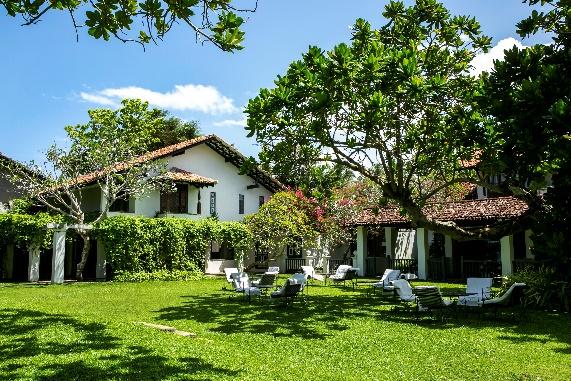

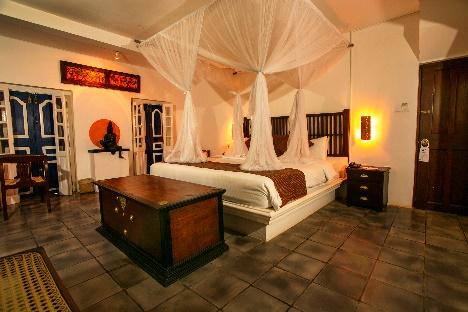
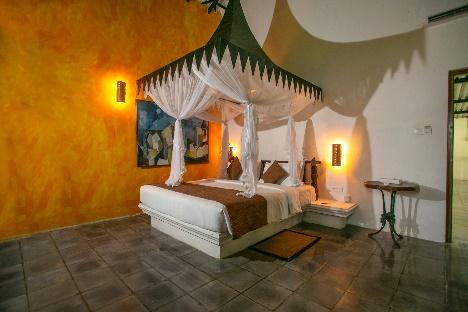
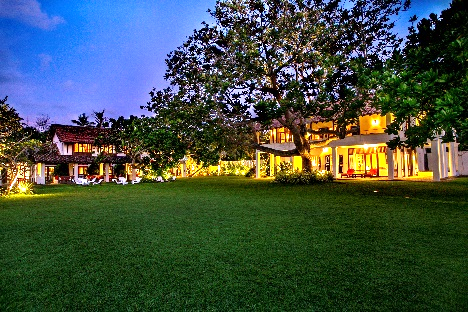
The visitors will be hosted for afternoon tea by the ultra-friendly staff at The Club Villa.
A visit can be made to the adjacent ‘Mohotti Walawwa’ as well in which Geoffrey has used yesteryear somewhat dated techniques to design long before he designed The Club Villa.
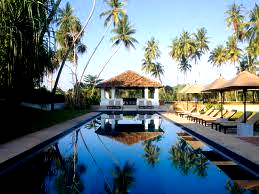

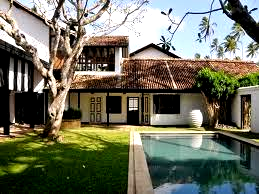
A further one hours’ drive towards Colombo will get you to arrive at the last resort Mr Bawa built “The Blue Water” in which he had used the “priority for space theory” to the limit. It is more modern in comparison to others.

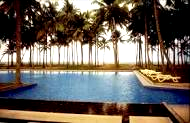

Afterwards proceed to Colombo and check in to the hotel.
Full day free to explore the city of Colombo, the great racecourse pavilion, now restored to its former glory very tastefully by a team headed by Mr Bawa’s disciples. You will also get to visit some of Mr Bawa’s creations in Colombo, The Integral centre (a religious creation) by a flowing river setting, Agrarian training centre, Mahaweli Centre and the wonder of the new parliament in the middle of an enchanting lake in addition to a visit to the house he lived where you could watch a documentary done on him.

Lunch will be arranged at the fascinating Water’s Edge links that overlooks the great swamps of Colombo, not too far from the Bawa designed new parliament. Water’s edge was designed by one of Mr Bawa’s closest disciples if not his last Mr Murad Ismail a decade after Mr Bawa breathed his last.
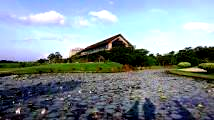

This area that hugs a large lake is used as a spot of recreation for the public with paved walkways, jogging tracks, nature trails etc as part of greater Colombo development.
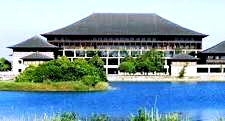
Independence Square built in Colombo according to traditional Sri Lankan architecture soon after Independence but long before Geoffrey Bawa’s time.
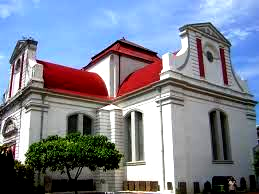



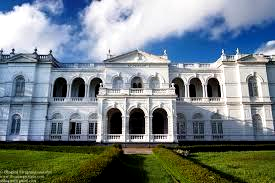

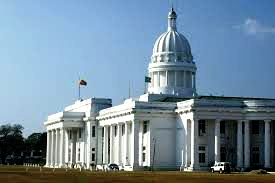
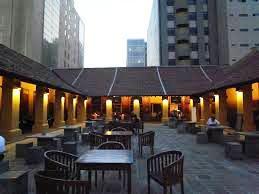
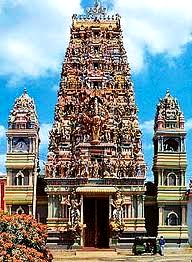
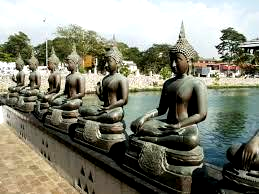
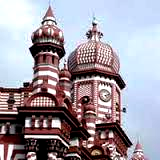
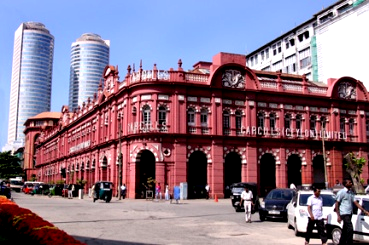
COLOMBO
Explore the city of Colombo visiting the lovely Galle Face Green; the great British Built lawn overlooking the waterfront of the Indian Ocean, Classic old parliament and the modern-day skyline of the city integrating into one another so incredibly.
It is a city where great colonial era buildings are still left intact and are immaculately maintained to stand side by side with the modern in the most elegant manner. This outlook in fact is not seen so prominently in any other city in Asia. It no doubt speaks volumes of the glorious past attached to the city of Colombo from the 15th century onwards when the ownership of the city changed hands from the King to the Portuguese and then to the Dutch and to the English later, until the Island became a sovereign state once again in 1948. All Europeans left their own footprints in the city and more importantly their values among its people that made the Islanders a great Nation and their capital so pleasingly special. You will get to visit the 17th century Dutch Wolfendhal church, The Museum, the Town Hall and The Victoria Park built by the British, a lovely temple of Buddha in a lake setting and a colourful Hindu shrine. The latest attraction is the tastefully salvaged 400-year-old Dutch Hospital in Colombo Fort which is now renovated to its former glory ever so wonderfully. You will find lively pubs, ritzy restaurants offering choice cuisines, coffee and tea houses, up-market spas, and even ample shopping, all within the unparallel charm of the vast hospital complex. The area with classic court yards, maze of alluring terraces with seating resembles European thoroughfares of the colonial times. The latest addition to the city is the newly renovated colonial racecourse which is now an international class rugby grounds where the mammoth grandstand feature great up-market shopping with amazing eating-houses. It is no doubt that this is the oldest colonial grandstand and pavilion in Asia.
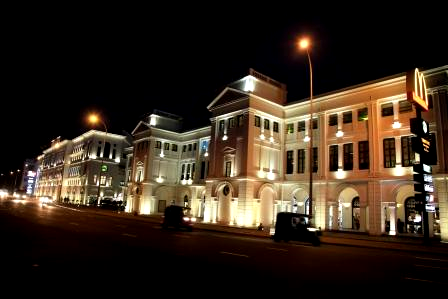
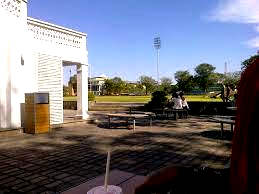
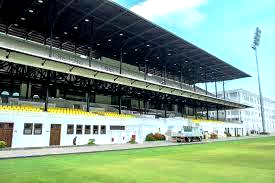
Latest Independence Arcade Mall – one of many salvaged colonial buildings
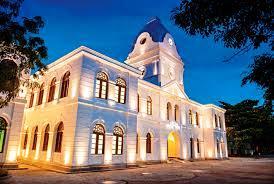
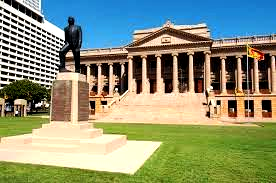
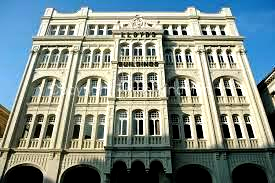
Shopping of traditional produce unique to the island at Barefoot galleries and Paradise Road!
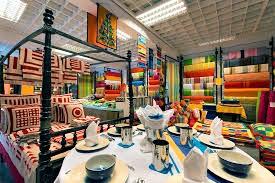
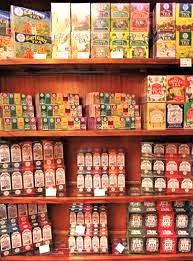
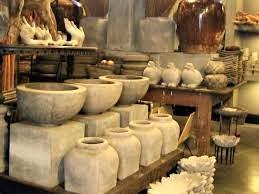
Galleries Café
Our dinner will be at the former office of Mr Bawa which now is converted to this most sought-after fine dining restaurant in the plush heart of Colombo.
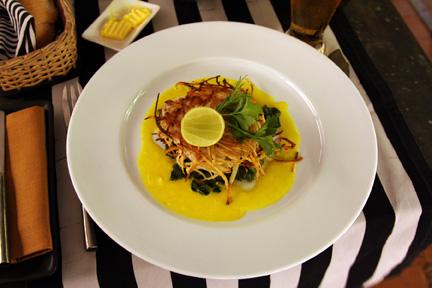


Afterwards, leave for the Airport for the departure.
……………………………. END OF BAWA TOUR OF SRI LANKA ………………………………….

